Net Revenue Retention Rate (NRR)
Last updated: Mar 17, 2025
What is Net Revenue Retention Rate?
Net Revenue Retention (NRR) Rate, also known as Net Dollar Retention (NDR), is the percentage of recurring revenue retained from existing customers in a defined time period, including expansion revenue, downgrades, and cancels. This churn metric gives a comprehensive view of positive as well as negative changes with respect to customer retention.
Net Revenue Retention Rate Formula
How to calculate Net Revenue Retention Rate
Here's an example of how to calculate Net Revenue Retention (NRR). We'll call this scenario A: A company has 100 customers, each paying $2,000 per month. MRR at the beginning of the month is $200,000. Within the month, 1 customer adds a $4,000 MRR upgrade, 2 downgrade by $500 each, and 1 customer cancels. Based on the Net Dollar Retention formula, NRR = ($200,000 + $4,000 - ($500 x 2) - $2,000) / $200,000 = $201,000 / $200,000 = 100.5% expressed monthly Now let's look at Scenario B: Another company has 100 customers paying $20,000 for annual subscriptions. Within a one month period, 10 customers are due for renewal, only 9 actually renew, 1 adds a $5000 ARR upgrade, and 2 downgrade their subscription by $2000 each. Net Dollar Retention = ($20,000 x 9) + $5,000 - ($2,000 x 2)) / ($2,000 MRR x 10) = $19,000 / $20,000 = 95.0% expressed monthly
Start tracking your Net Revenue Retention Rate data
Use Klipfolio PowerMetrics, our free analytics tool, to monitor your data.
Get PowerMetrics FreeWhat is a good Net Revenue Retention Rate benchmark?
In a SaaS business, a Net Revenue Retention Rate >100% is a growth indicator. Across all SaaS companies, the median Net Retention Rate is 103% to 105%. Higher Annual Contract Value (ACV) products have higher Net Retention Rates. For SaaS companies selling into small and medium businesses (SMBs), a good Net Retention Rate is 90%. For Enterprise SaaS, 125% is considered a good Net Retention Rate. When looking at its portfolio of companies scaling to $10M in ARR, Bessemer Venture Partners reports the bottom quartile at less than 105%, the middle at 140%, and the top at greater than 145% NRR. April 2022.
Net Revenue Retention Rate benchmarks
Net Dollar Retention Rate by ACV
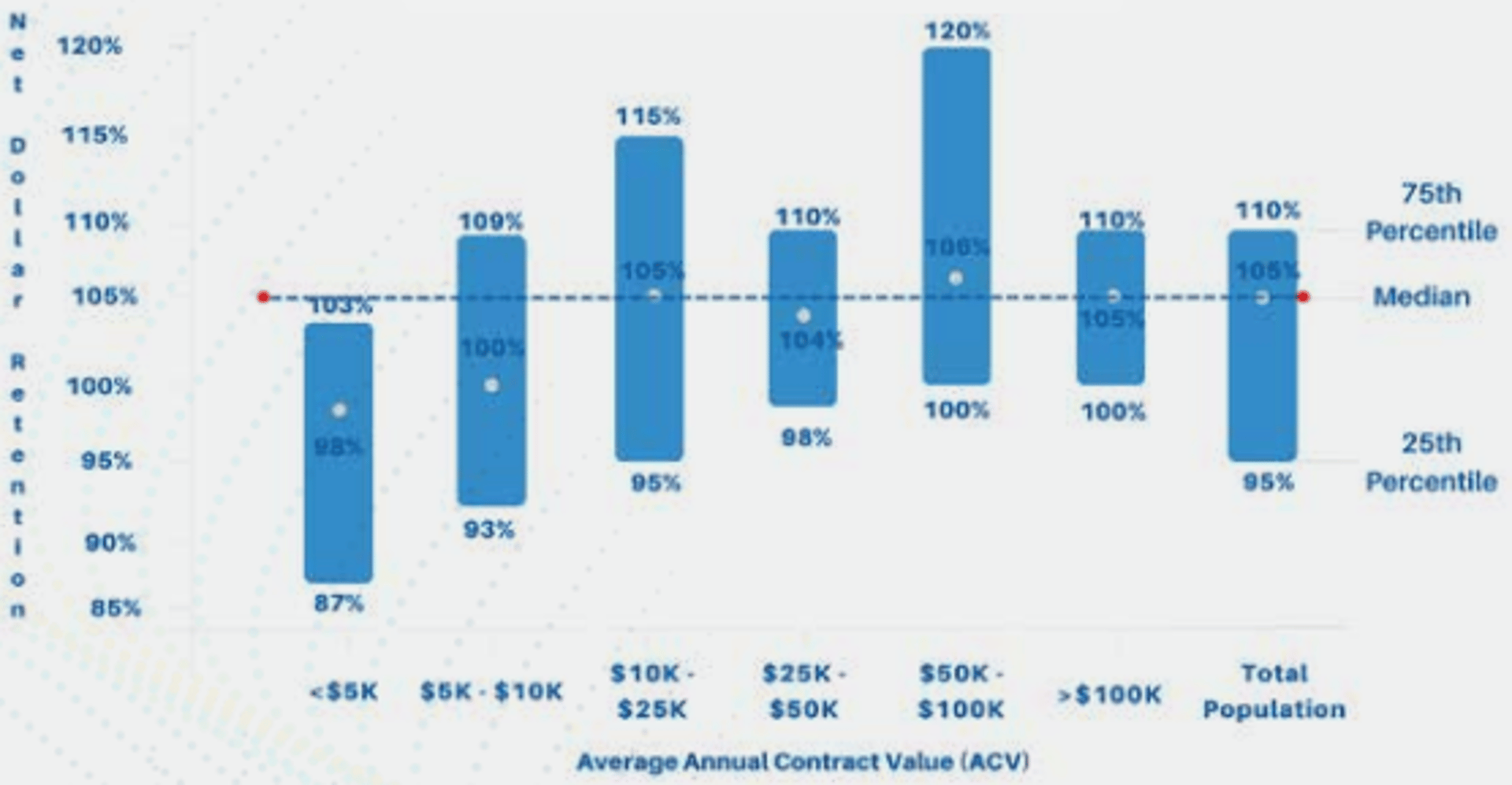
Net Dollar Retention Rate by ACV
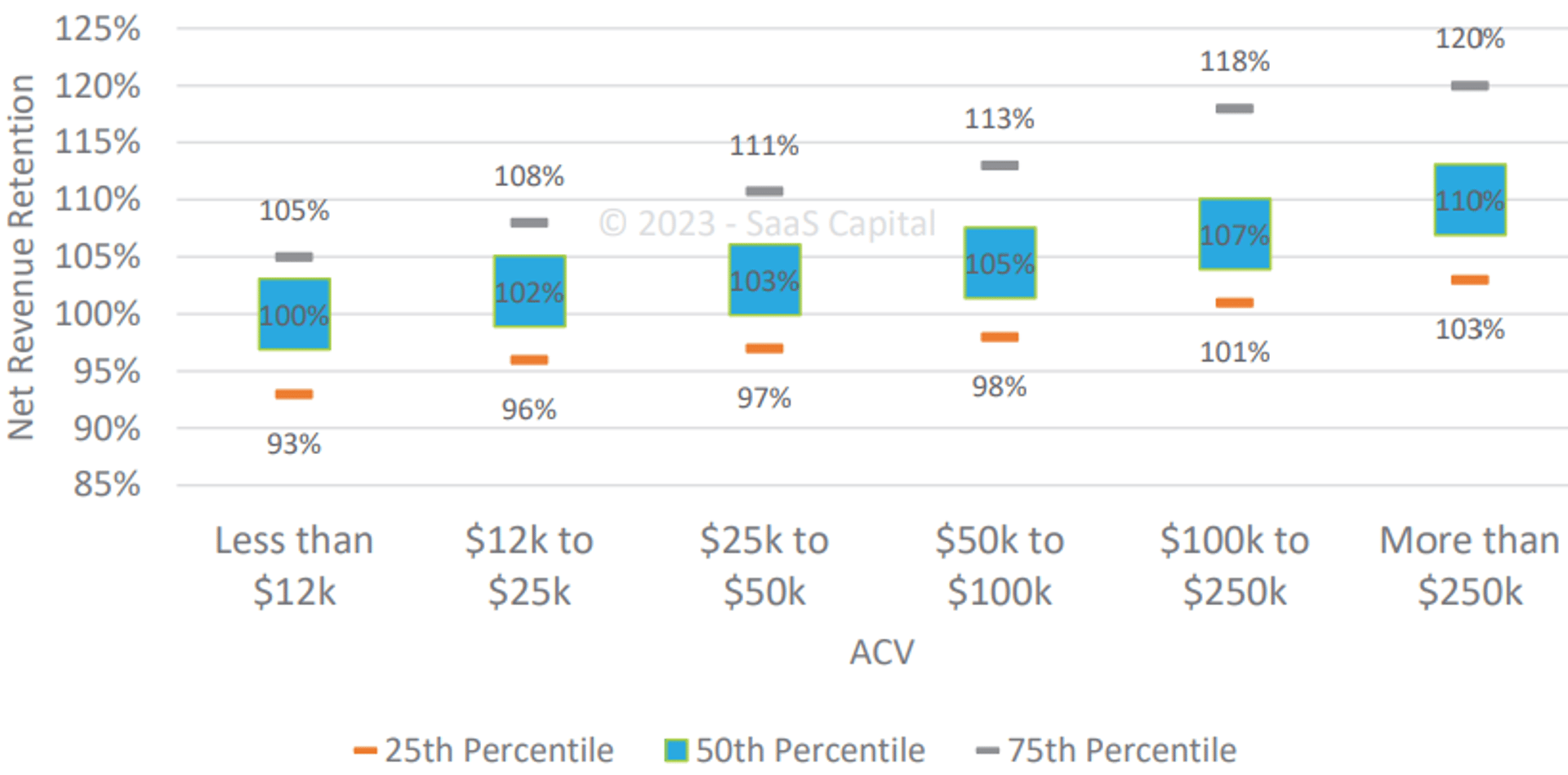
Net Revenue Retention Rate by Revenue
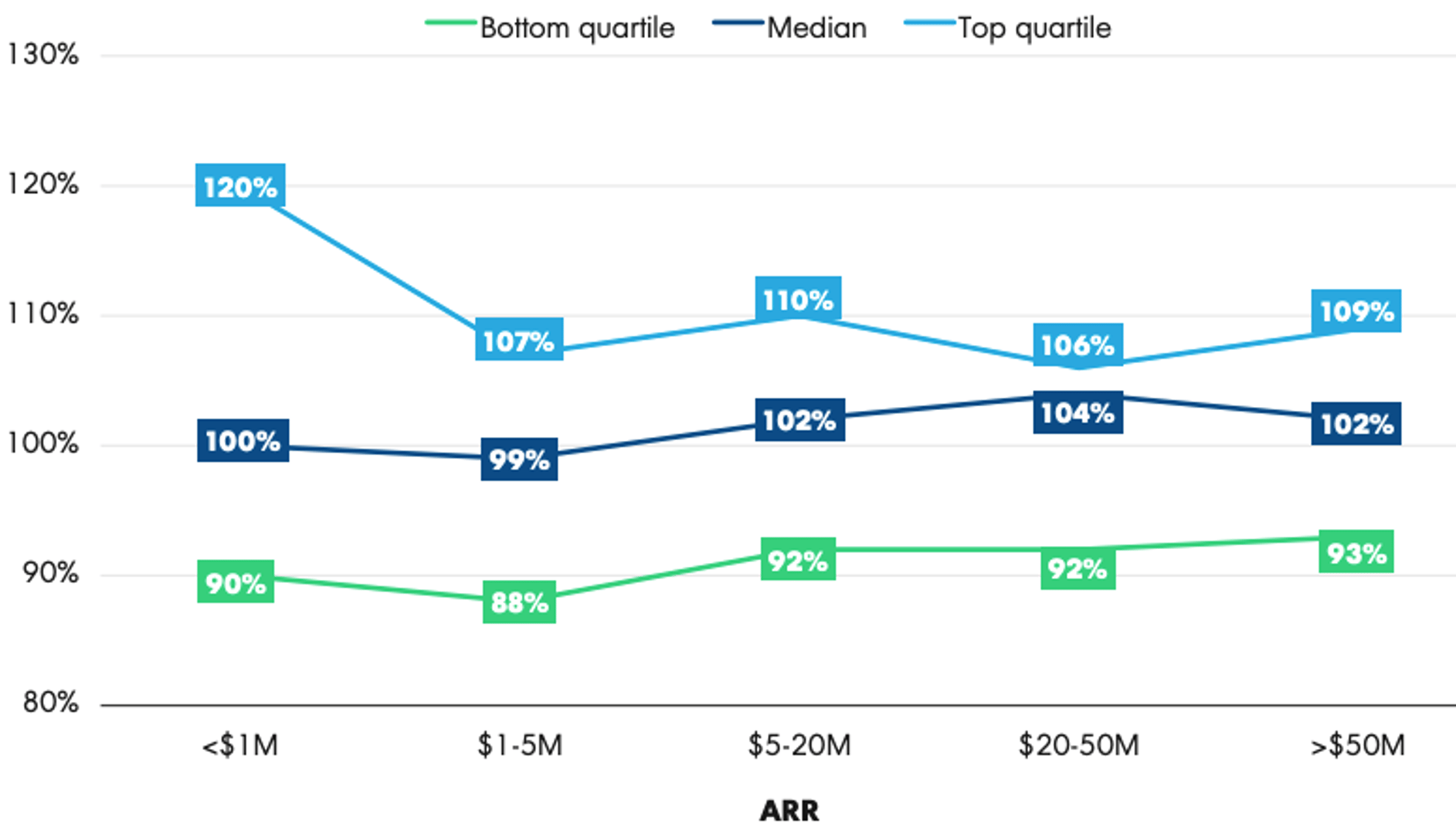
Net Revenue Retention Rate by Revenue
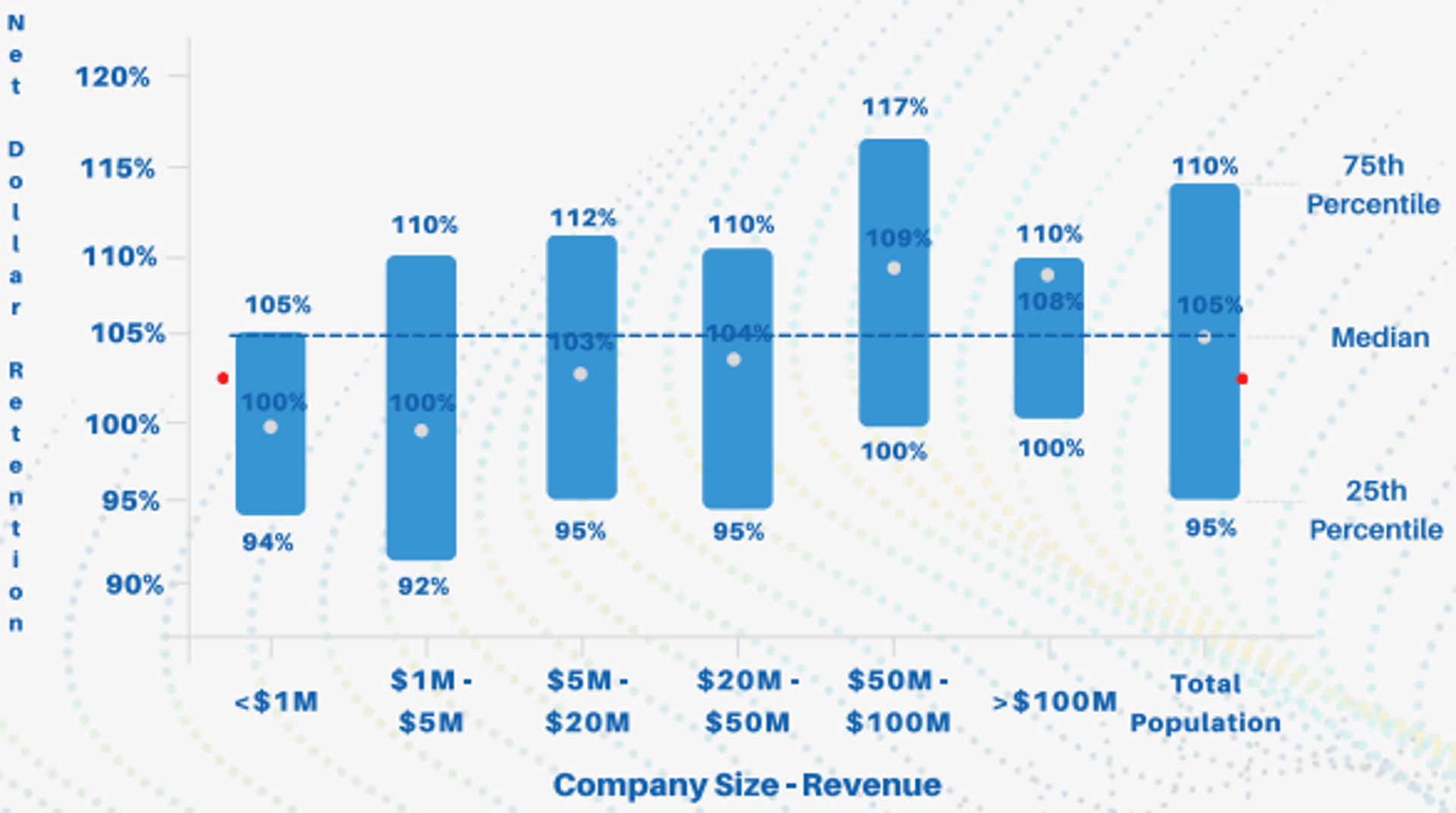
NDR and GRR by Contract Length
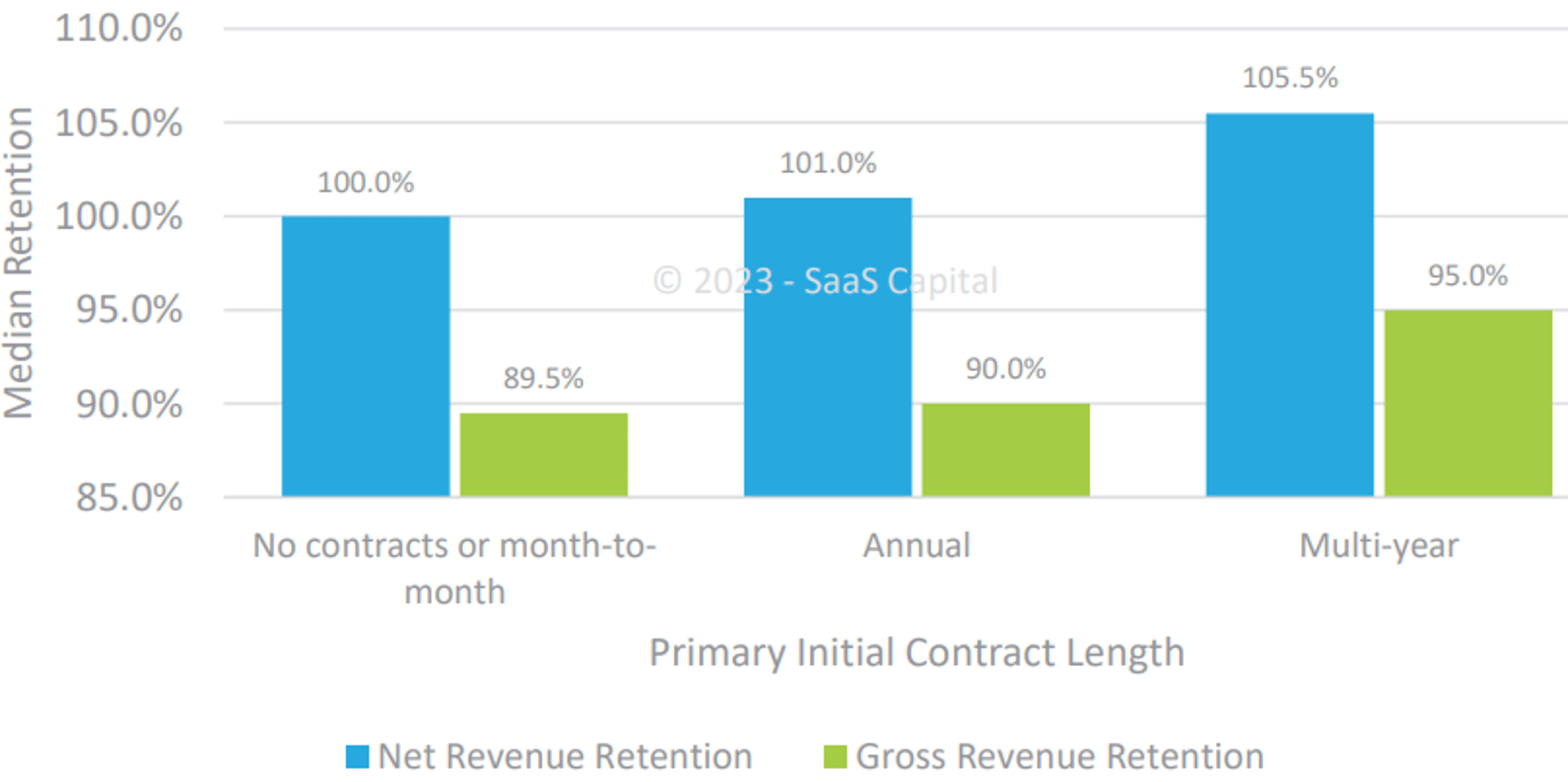
How to visualize Net Revenue Retention Rate?
In most cases, Net Revenue Retention Rate is tracked monthly or yearly. Although you achieve a fuller picture of retention by tracking both dollar and customer retention, NRR can be a great place to start. Remember to review your NRR percentage at least on a monthly basis to stay informed of negative (and positive!) fluctuations and their impact on your revenue. Take a look at the chart to understand what it looks like when you start tracking NRR regularly:
Net Revenue Retention Rate visualization example
Net Revenue Retention Rate
Line Chart
Net Revenue Retention Rate
Chart
Measuring Net Revenue Retention RateMore about Net Revenue Retention Rate
Retaining customers is key for operating a healthy and profitable business. A high Net Retention Rate (NRR), or Net Dollar Retention (NDR) is an indication that your offering represents a strong value proposition for your customers.
NRR is an indication of how well a company can not only renew, but generate additional revenue from its customers following an initial sale, in what’s often referred to as a “land and expand” strategy. NRR is also an important component of profitability. Acquiring a new customer can be 5 - 25 times more costly than retaining an existing customer. By keeping and expanding your existing customers, you reduce your Customer Acquisition Cost (CAC), therefore increasing your profitability.
A high company growth rate and high NRR are correlated according to SaaS Capital research. Gainsight has also found that mature Customer Success practices are correlated with a higher Net Dollar Retention.
For a comprehensive understanding of retention, it’s important to track both the percentage of all customers who renew or cancel contracts, measured by logo churn, and the percentage of all revenue dollars under contract which renew.
Net Revenue Retention Rate Frequently Asked Questions
What does it mean when NRR is over 100%?
When NRR is over 100%, it indicates that more revenue is generated via up-sells and cross-sells than revenue lost due to churn.
What's the difference between Net Revenue Retention and Gross Revenue Retention?
Net Revenue Retention factors expansion into the calculation whereas Gross Revenue Retention (GRR) does not measure expansion(in the form of upgrades). Use GRR to measure revenue stability and NRR for the bigger picture of growth and revenue flow. Read in detail on the NRR vs GRR Comparison Page.
Why should you track Net Revenue Retention Rate (NRR)?
NRR is a key metric for evaluating your financial performance. With one glance at the trends in your NRR data, you can learn about your retention, expansion, growth, and financial stability. Regularly tracking this metric with a free analytics tool (we recommend PowerMetrics!) will make the difference between proactive action versus damage control.
Podcast Episode
